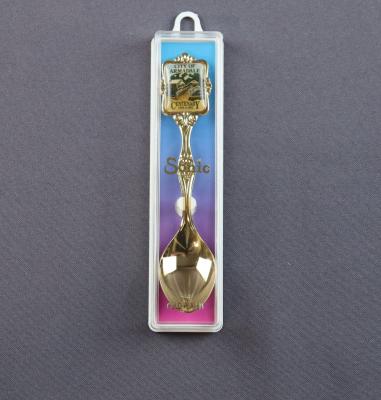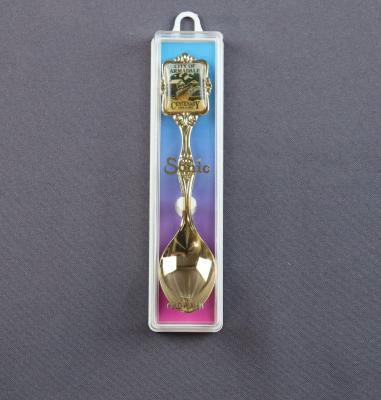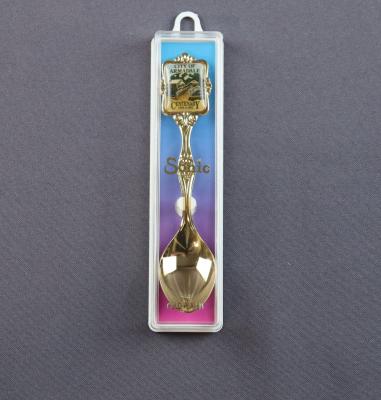TRAVEL SEWING KIT
Off-white plastic body with a screw-on pink plastic thimble on the top and a extended portion with a hole through at the bottom. A length of pink cotton is threaded through this hole.
The body of the sewing kit has a makers mark [KURANT] in the lower section, with an inlaid metal badge with the word [Perth] over the top of a rural setting picture.
Inside the sewing kit is a plastic, multi-section bobbin for holding cotton thread. The bobbin is divided into 3 sections with black thread on the lower section, white thread on the middle section, and both red and blue thread sharing the top section. At the top of the bobbin is a pink threaded cap which unscrews to reveal a compartment for storing needles.
This sewing machine was purchased by the Western Australian Department of Education for the Armadale State School some time in the 1930s. it was one of a number of sewing machines purchased for the school and were used to teach sewing to the schools female students. The sewing machines were used at the school through to the late 1960s early 1970s.
In 1984 the sewing machines were sold via a fund-raising auction for the school when it was preparing to move from its Third Road location to its new site on Carradine Road. This machine was purchased by Jenny and Graham Hantler who's children were attending the school at this time. The sewing machine was used as a decorative piece in the Hantler's Bedfordale home for the next 38 years.
This model of Singer Sewing Machine was manufactured between 1929 and 1939 at Singers Kilbowie factory in Scotland.
'Domestic Science' or 'Home Economics' classes were primarily taught to female students to prepare them either to be 'home makers' or domestic servants. Domestic Science classes covered cooking, nutrition, hygiene, sewing, laundry, clothes making, infant care, home decoration and household management skills. In the 1960s and 70s 'domestic science' classes began to be seen as promoting sexism and inequality as it encouraged female students down a set path. School curriculum underwent considerable revision in the 1980s and 90s and 'domestic sciences' and the 'manual arts' classes became more inclusive and were re-designed with a more vocational focus. Now Early Childhood, Health and Well-being, Textiles and Fashion or Hospitality are taught instead.
Details
Details
KURANT
This item is part of a collection that tells the story of going to school in the City of Armadale from the late 1800s through to modern day. The collection aims to show how these experiences have either changed or stayed the same over time. The collection is also part of a wider collection that focuses on the stories and experiences of how children have grown up in the City of Armadale.
City of Armadale - History House
City of Armadale - History House
Other items from City of Armadale - History House
- BOX OF SEWING MACHINE ATTACHMENTS
- BOX OF SEWING MACHINE ATTACHMENTS AND TOOLS
- OIL TIN SEWING MACHINE OILER
- BASE DRAWER HOOK FOR SINGER SEWING MACHINE TREADLE LEGS
- PLASTIC BAG OF SEWING MACHINE ATTACHMENTS AND TOOLS
- TEASPOON - CITY OF ARMADALE CENTENARY 1894-1994
- TEASPOON PLASTIC CASE LID - CITY OF ARMADALE CENTENARY 1894-1994
- TEASPOON PLASTIC CASE BASE - CITY OF ARMADALE CENTENARY 1894-1994
- TURBAN - SIKH CEREMONIAL
- PHOTO, COMMEMORATIVE - BUCKINGHAM BRIDGE COLLAGE
- PLAQUE, COMMEMORATIVE - ARMADALE MURAL OF RECONCILIATION OCTOBER 1994
- PATCH, INSIGNIA - CITY OF ARMADALE KELMSCOTT BRIGADE



